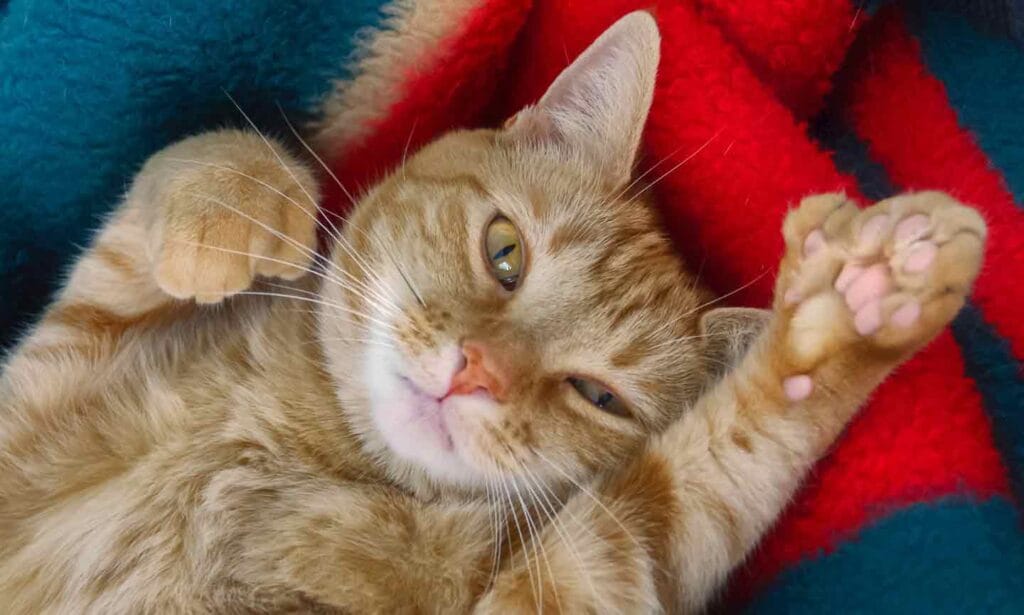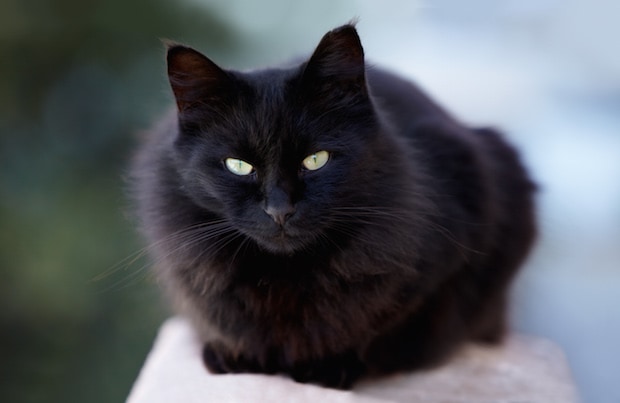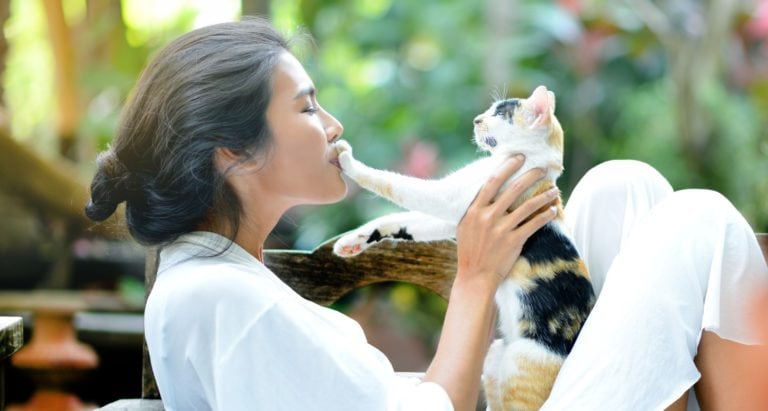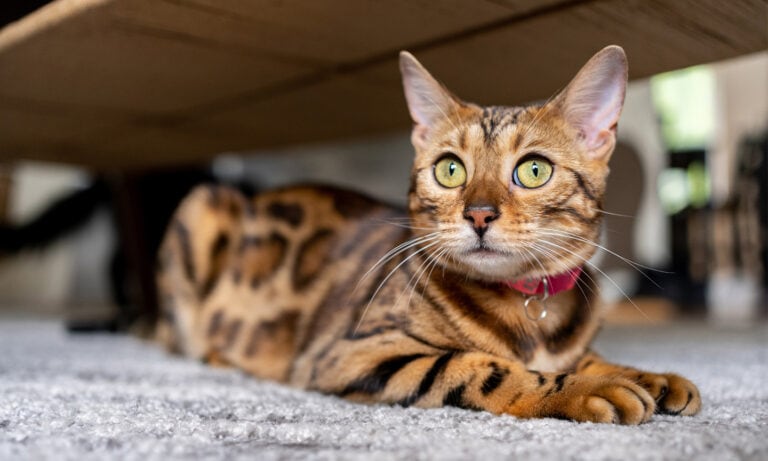As pet parents, we all have something in common: We all love our fur babies’ toe beans! Often pink-hued or even polka-dotted, who doesn’t adore kitties’ toes as they stretch or make biscuits?
But let’s say that you’re walking around an animal shelter, and you spot the most adorable kitten to take home—and you notice that they have a few extra toes! Yes, cats can have extra toes, and it’s called being polydactyl. But what does that mean exactly? How do our feline friends end up with these additional digits? And do these cats require any special care?
If you have a polydactyl cat in your life or are looking to adopt one, read on for helpful info and tips.
In This Guide
What Is Polydactylism?
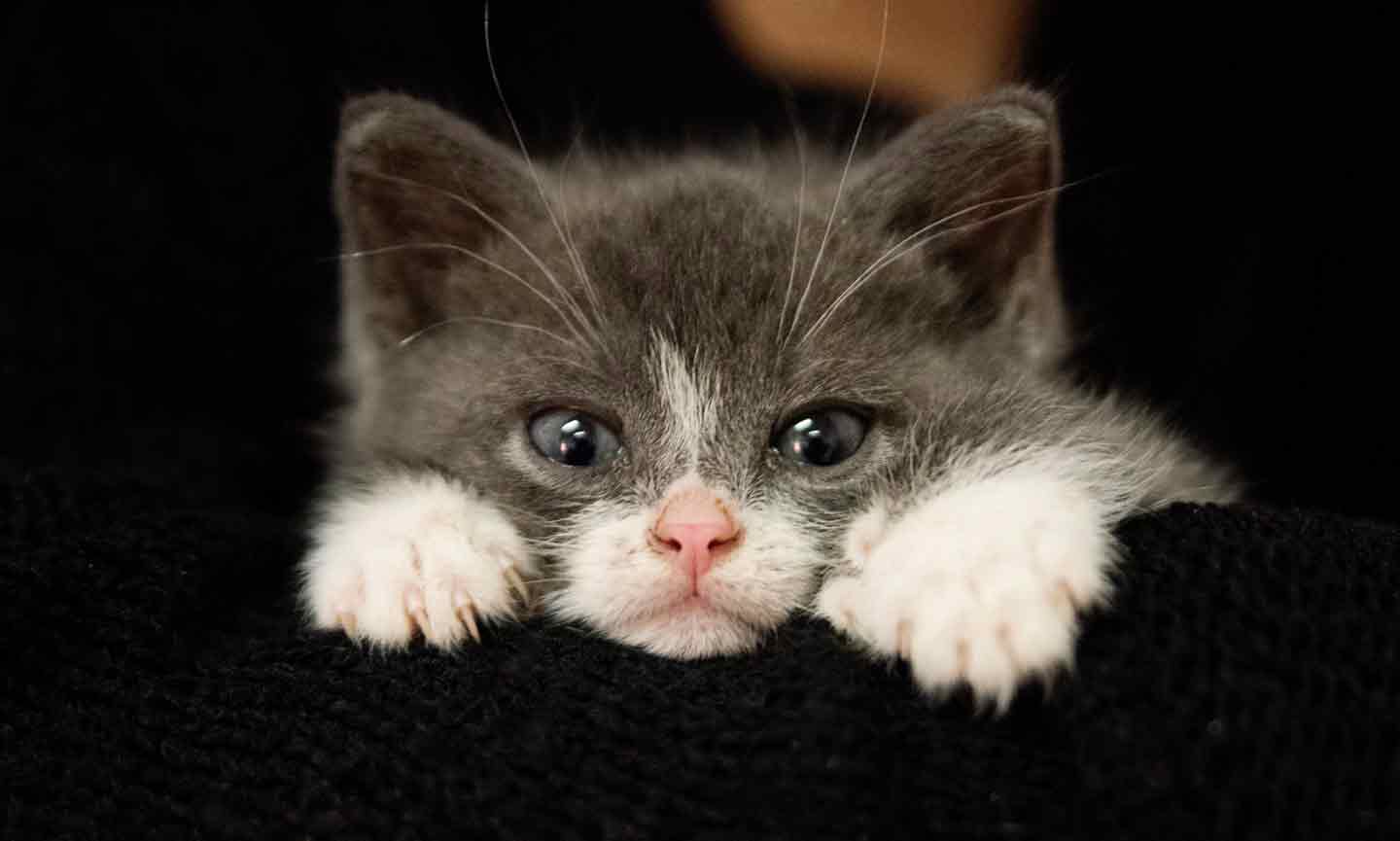
So, what does it mean to be polydactyl anyway? Well, the word literally means “many digits,” and it’s a condition in which cats are born with more than the normal number of toes. In case you’re wondering, the standard number of kitty toes is 18—five for each front paw and four for each back paw.
Specifically, polydactylism—also called polydactyly—is a genetic mutation. The mutation is referred to as “autosomal dominant,” which means that it’s a trait passed down through families of cats. When a cat is polydactyl, it usually means that they have one extra toe on each front foot, but occasionally, there can be more. While it’s more common to have additional toes on the front paws, every now and then, it can also affect the hind paws. In some cases, it can impact all four feet.
In general, polydactyl cats can have six to eight toes on each foot, making for an appearance that resembles a mitten. Due to this characteristic, polydactyl cats are sometimes nicknamed “mitten cats”!
The 3 Types of Polydactyl Cats
Overall, there are three different types of polydactylism, and each one is distinct from the other. They are:
- Preaxial: This involves extra toes on the inside edge of the foot, resulting in an extra dewclaw that’s well-developed and resembles a thumb. Additionally, these cats are known to have very wide paws.
- Mesoaxial: These cats have an extra toe in the middle of the foot that can look like a regular toe or can be a shorter toe that keeps the nail from extending to the outer edge of the foot with the others.
- Postaxial: Here the expression of extra toes is on the outside edge of the foot—if cats had a “pinky finger,” these cats would have an extra pinky.
Are Polydactyl Cats Rare?
Are polydactyl cats pretty rare? Or are they more common than we think?
Even though polydactylism is inherited as a dominant gene, it’s still quite rare. If one of the parents is polydactyl, the kittens have a 40-50 percent chance of having the condition.
And the scarcity can be broken down by the types of polydactylism as well. Preaxial cats are more common, postaxial cats are quite rare, and mesoaxial cats are in the middle when it comes to rarity.
What Types of Cats More Often Have Extra Toes?
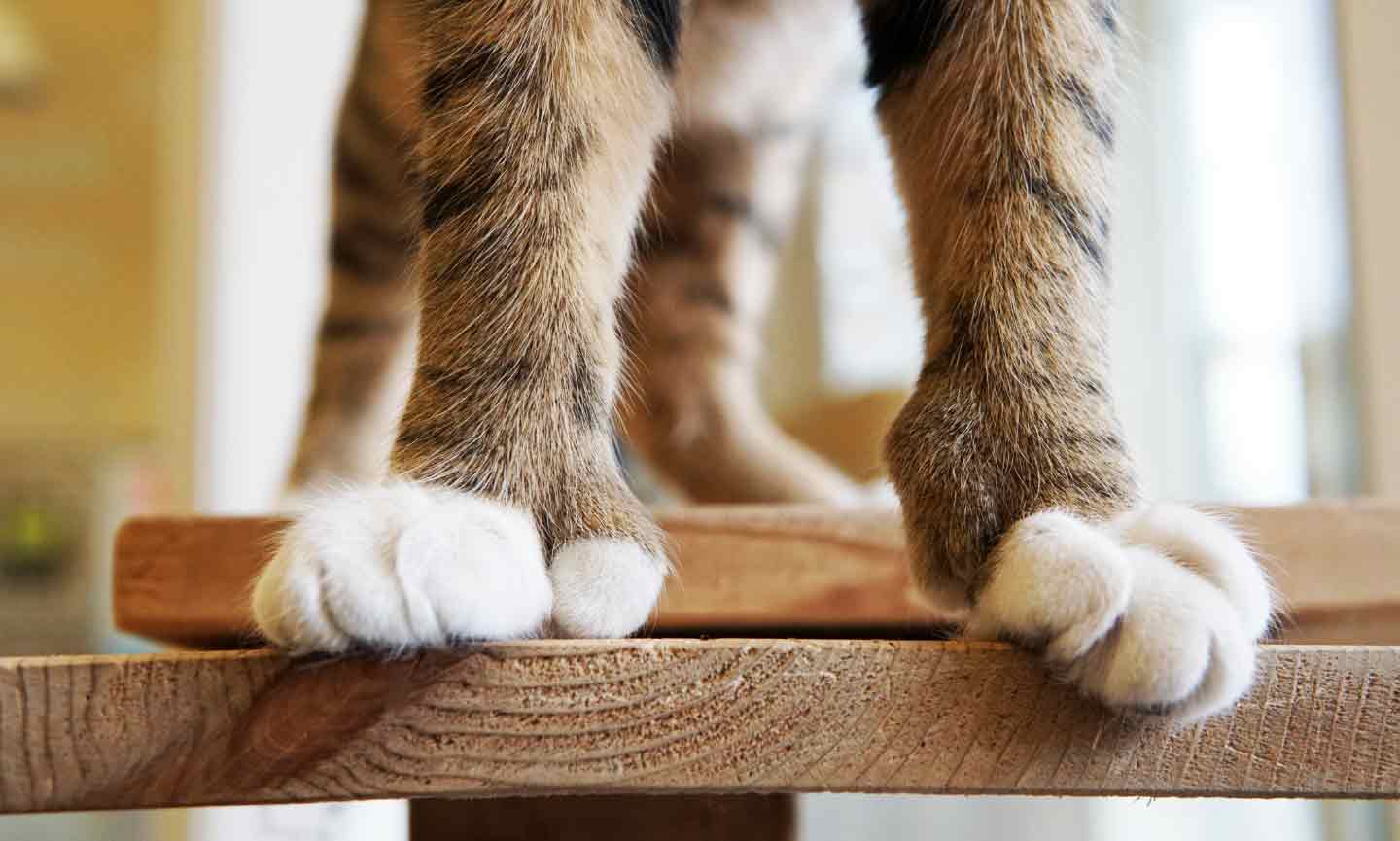
There are some factors that can increase a cat’s likelihood of having extra toes, often coming down to their breed, where they live in the world, and some additional factors.
The top two cat breeds that are polydactyl? Maine Coons, those extra-large and extra-fluffy cats that are one of the oldest natural breeds in North America, and Pixie Bobs, which, as legend says, descended partly from bobcats and tend to have an exotic look. Maine Coon cats have a relatively high rate of polydactylism compared to the cat population as a whole.
Although polydactyly comes up more often for these breeds, veterinarians say that they see it in every breed, including the typical “domestic shorthair” cat. In fact, any mixed-breed cat can acquire polydactylism, as it is a dominant trait.
For instance, the Hemingway cats of Key West, Florida, are a good example of mixed-breed cats with a high rate of polydactyl inheritance. These cats are so famous that polydactyl cats are often referred to as “Hemingway Cats.” Being an island, Key West has seen many stray cats interbreeding with the descendants of Ernest Hemingway’s polydactyl cat.
On the opposite coast, many polydactyl cat colonies have been discovered in Cedar Key, Florida.
In addition, polydactyl cats can be found frequently on the East Coast, especially where cat colonies have been isolated on an island. They’ve also been located in parts of England and Canada.
Polydactyl cats may be concentrated in Canada, the Eastern United States, and England because of their history of travel on ships. Ships’ captains thought they had good balance on the rocking ships because of the extra toes and viewed the cats as expert mousers. Some captains also claimed that they brought good luck, a much-needed commodity in historic transatlantic travel.
Polydactyl cats have become more common through breeding, as it’s a dominant genetic trait. This trait tends to occur more frequently in areas where cat populations are allowed to breed freely.
As an interesting historical note, throughout history, polydactyl cats have been thought to be witches or the result of sorcery in parts of Europe. Sadly, many of these cats were shunned or even killed due to these beliefs.
Ernest Hemingway and the Polydactyl Cats at Hemingway House
If you’ve ever visited Key West, Florida, you may know that the author Ernest Hemingway had a fondness for polydactyl cats, which is evident to this day at his former island estate. Currently, the Ernest Hemingway home has around 60 six-toed feline residents, making up about half of its overall cat population.
All of these kitties descended from a polydactyl cat named Snow White, whom Ernest Hemingway was gifted by a ship captain. But the Hemingway cats of today do not share a common breed—they represent a variety of feline types, from calicos to tabbies to tortoiseshells.
And since Hemingway had a tradition of naming his cats after famous people, the custom continues today. You just might meet cats named Shirley Temple, Howard Hughes and Rita Hayworth when visiting The Hemingway Home and Museum.
Are Polydactyl Cats Prone to Health Issues?
You might be wondering: What health issues typically come with polydactyl cats, if any?
Depending on the location of the extra toe(s), some toes can be hard to reach for keeping them trimmed and may even grow in abnormal ways. This can result in ingrown nails, which can be a very painful condition. Or the toenails can continue to grow into the paw pad, causing trauma and infection. Generally, a scratching post won’t help file down these extra hidden claws.
At times, some of the toes can be just soft tissue, and they don’t contain the typical bone structure. Since they’re not fully functioning and they’re essentially pieces of floppy soft tissue that hangs, there is a risk of getting these toes caught on something.
Occasionally, a veterinarian might recommend removal of a specific toe if it tends to be a consistent problem source. If the toes can all be kept up with when it comes to nail trims, it won’t be medically necessary to remove any of the toes. But if your cat does need a toe or two amputated, you should know that it likely won’t affect their gait or balance.
Thankfully, there are no diseases or serious health issues that are inherited alongside the trait of polydactylism. Just plan on some extra care, grooming, and cat nail trims for those extra toes and toenails.
Does Polydactylism Have Any Advantages for Cats?
Besides making them look like they’re wearing big mittens or have adorably wide paws, polydactyl cats can enjoy some benefits.
People have witnessed polydactyl cats acting as world-champion hunters. That’s because their extra-large front paws may make it easier for them to catch bugs, lizards or mice. And like those sea captains of yore, others say that these cats tend to have a better sense of balance.
Of course, these “myths and legends” haven’t been scientifically proven. But what is true is that polydactyl cats tend to be thought of as even cuter than cats with the regular number of toes—they may even have a higher rate of adoption from shelters because of it.
Caring for a Polydactyl Cat
There are a few special measures pet parents can take with their polydactyl cats, besides admiring how cute and unique they look!
If you get a polydactyl kitten, it’s important to get them used to nail trimming as soon as you can. Touch their feet and nails daily. You need to be able to touch your cat’s feet to assess their toes and nails regularly. Check for overgrown toenails, as some of the extra toes may not develop the muscles, nerves and tendons to be fully functional. And remember, a scratching post will likely not be enough to maintain all these nails.
If you don’t know how to trim their nails already, this guide can help. You can also ask your veterinarian to teach you. Vets recommend giving your kitty a tasty snack like a Churu stick while trimming their nails for positive reinforcement. It’s a good idea to make it an enjoyable experience, as these cats will need regular nail trims approximately every month for the rest of their lives.
More Fun Cat Facts
Share:
